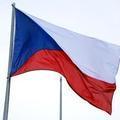In the Czech Republic two distinct variants or interdialects of spoken Czech can be found, both corresponding more or less to geographic areas within the country. The first, and most widely used, is "Common Czech", spoken especially in Bohemia. It has some grammatical differences from "standard" Czech, along with some differences in pronunciation. The most common pronunciation changes include -ý becoming -ej in some circumstances, -é becoming -ý- in some circumstances (-ej- in others). Also, noun declension is changed, most notably the instrumental case. Instead of having various endings (depending on gender) in the instrumental, Bohemians will just put -ama or -ma at the end of all plural instrumental declensions. Currently, these forms are very common throughout the entire Czech republic, including Moravia and Silesia. Also pronunciation changes slightly, as the Bohemians tend to have more open vowels than Moravians. This is said to be especially prevalent among people from Prague. The second major variant is spoken in Moravia and Silesia. Nowadays it is very close to the Bohemian form of Common Czech. This variant has some words different from its standard Czech equivalents. For example in the dialect spoken in Brno, tramvaj (streetcar or tram) is šalina (originating from German "ElektriSCHELINIE"). Unlike in Bohemia, Moravia and Silesia tend to have more local dialects varying from place to place, however just as in Bohemia, most have been already heavily influenced and mostly replaced by Common Czech. Everyday spoken form in Moravia and Silesia would be a mixture of remnants of old local dialect, some Standard Czech forms and especially Common Czech. The most notable difference is a shift in used prepositions and case of noun, for example k jídlu (to eat - dative) (as in German zum Essen) becomes na jídlo (accusative), as it is in Slovak na jedlo. It is a common misconception that the use of Standard Czech in everyday situations is more frequent than in Bohemia. The Standard Czech became standardized by the Czech national revivalists in the 19th century, based on an already three hundred year old translation of the Bible (Bible of Kralice) using an older variant of the then-current language (for example, preferring -ý- to -ej-). These Standard forms are still common in spoken language both in Moravia and Silesia. Some Moravians and Silesians therefore tend to say that they use "proper" language, unlike their Bohemian compatriots.

Czech Republic, Czechoslovakia, Czech dialects
To hear audio for this text, and to learn the vocabulary sign up for a free LingQ account.
